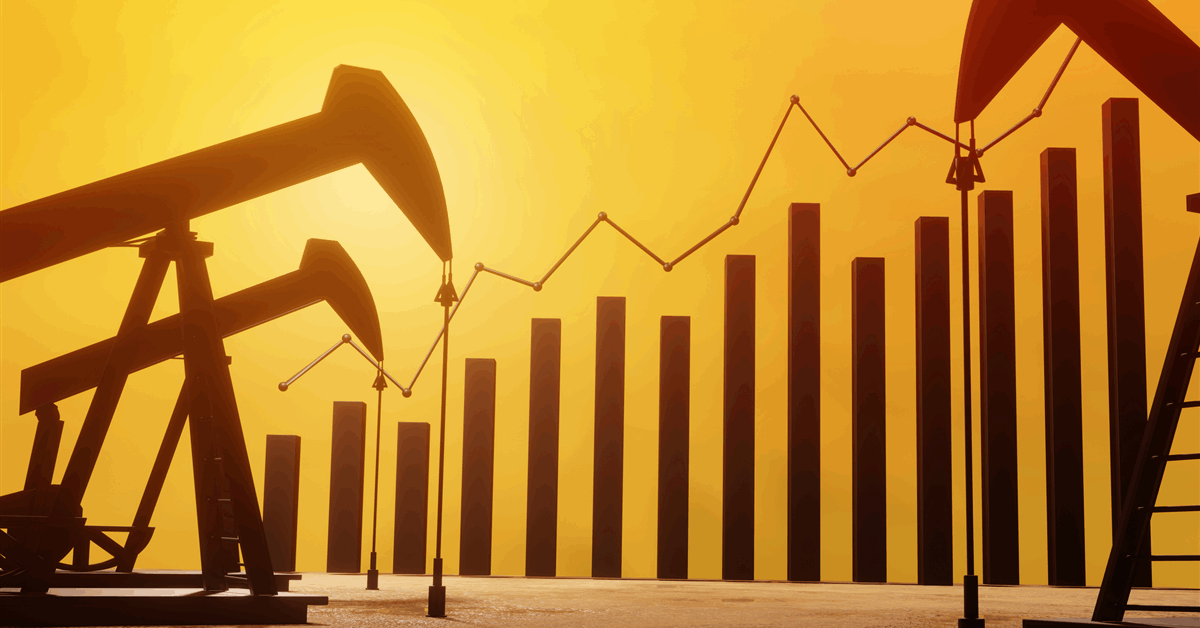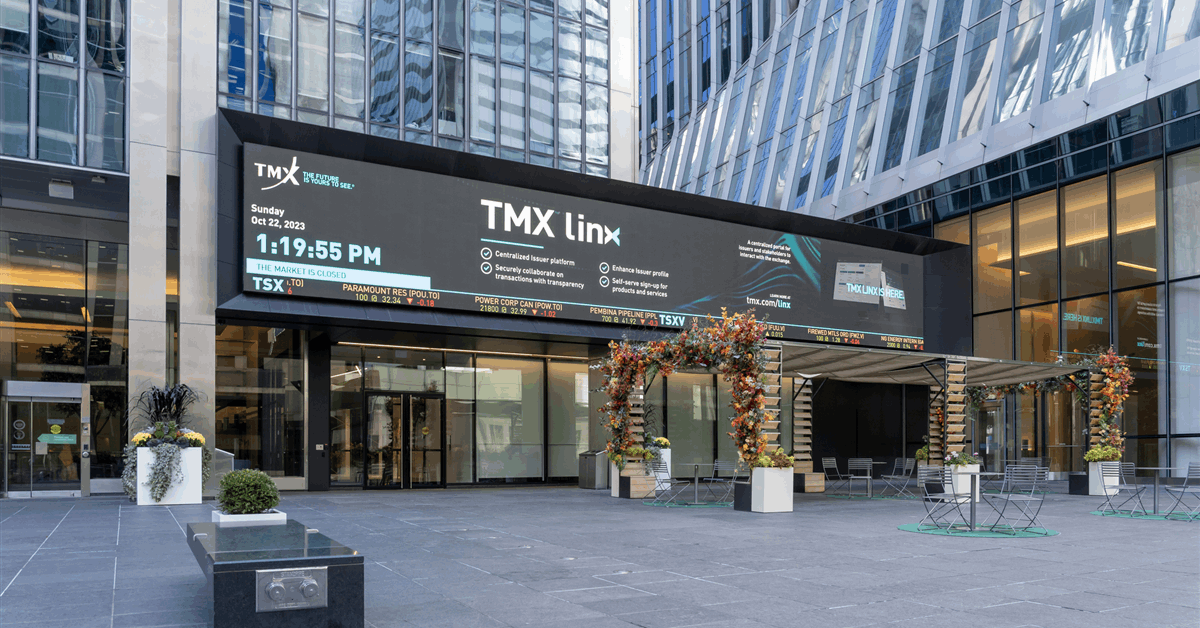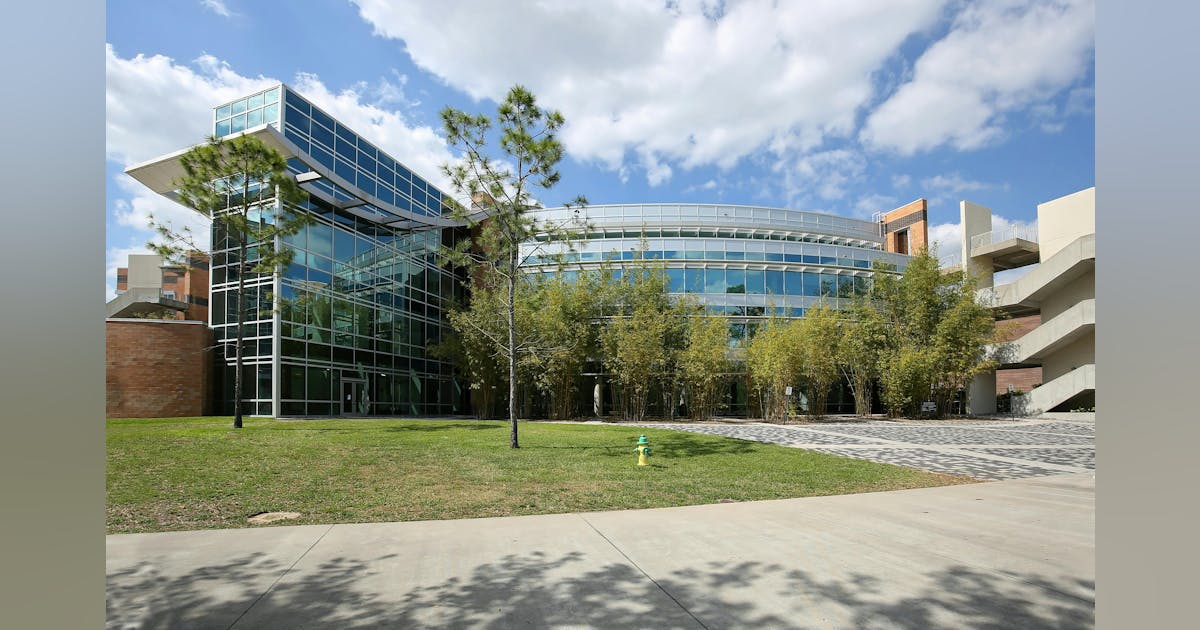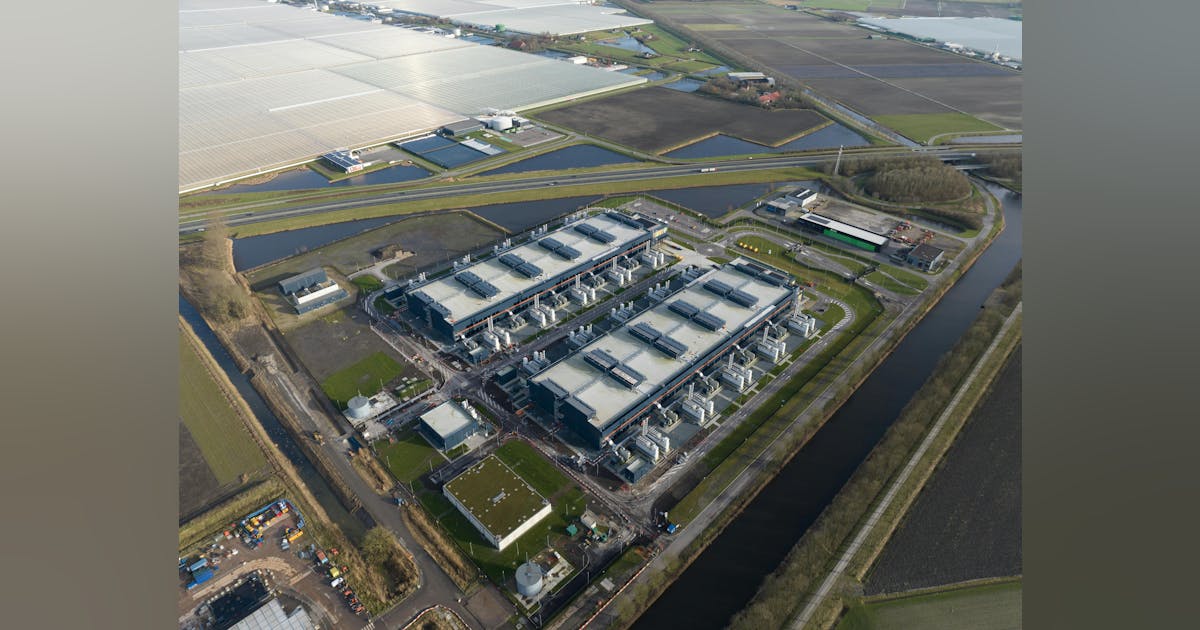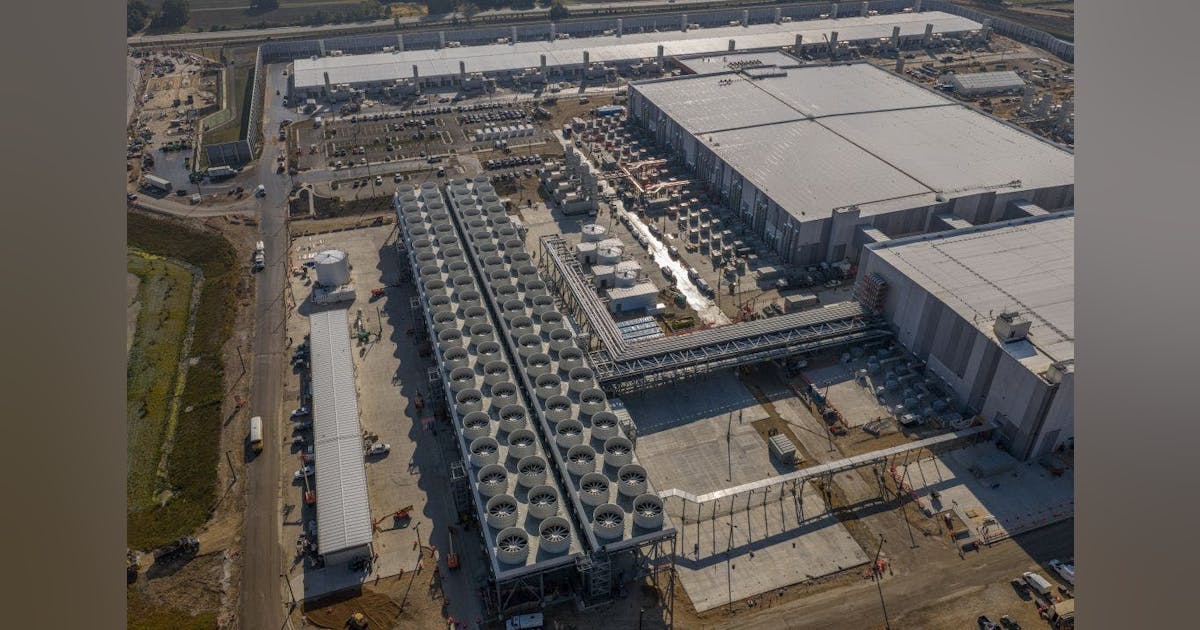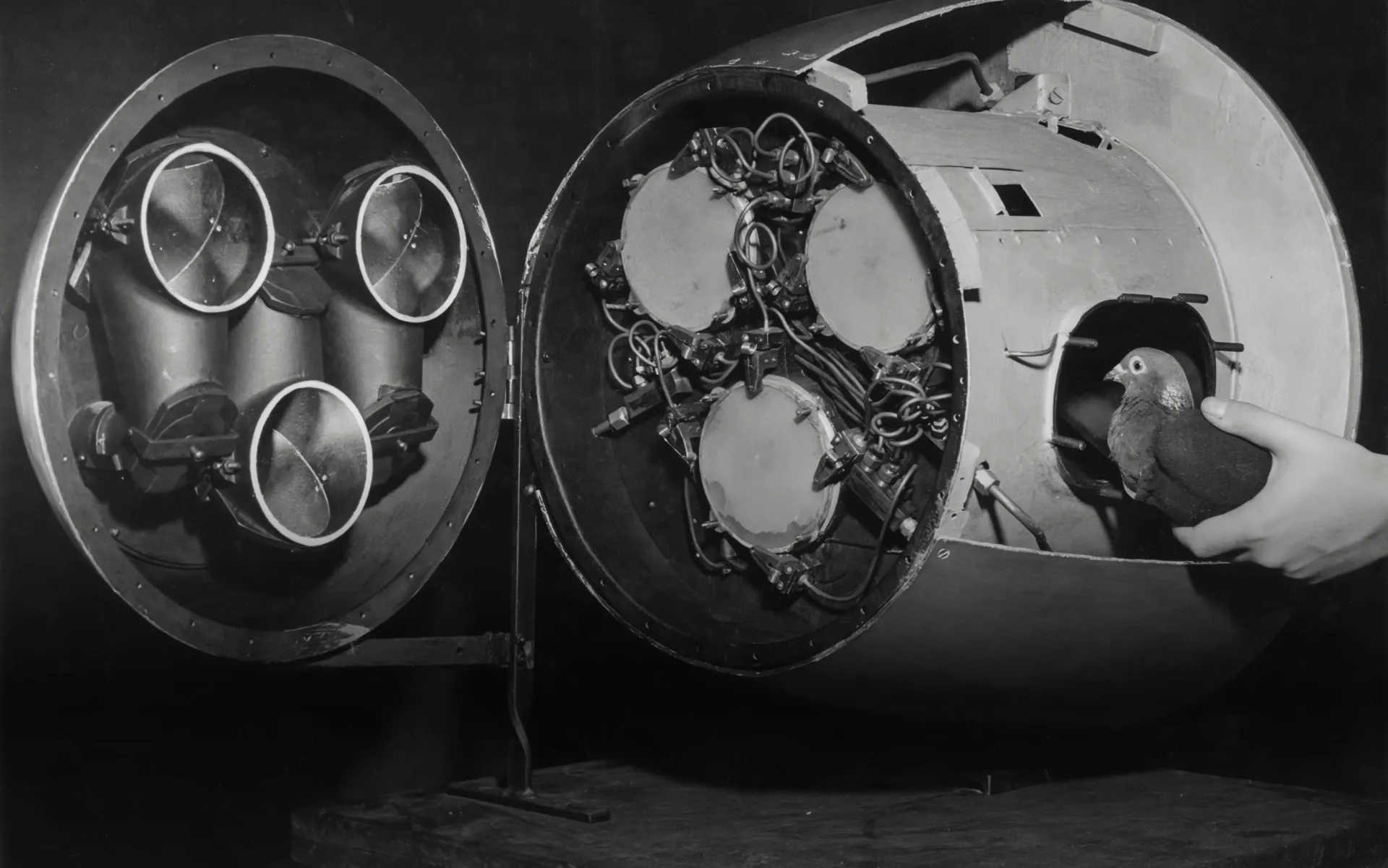It’s the 25th of June and I’m shivering in my lab-issued underwear in Fort Worth, Texas. Libby Cowgill, an anthropologist in a furry parka, has wheeled me and my cot into a metal-walled room set to 40 °F. A loud fan pummels me from above and siphons the dregs of my body heat through the cot’s mesh from below. A large respirator fits snug over my nose and mouth. The device tracks carbon dioxide in my exhales—a proxy for how my metabolism speeds up or slows down throughout the experiment. Eventually Cowgill will remove my respirator to slip a wire-thin metal temperature probe several pointy inches into my nose.
Cowgill and a graduate student quietly observe me from the corner of their so-called “climate chamber.” Just a few hours earlier I’d sat beside them to observe as another volunteer, a 24-year-old personal trainer, endured the cold. Every few minutes, they measured his skin temperature with a thermal camera, his core temperature with a wireless pill, and his blood pressure and other metrics that hinted at how his body handles extreme cold. He lasted almost an hour without shivering; when my turn comes, I shiver aggressively on the cot for nearly an hour straight.
I’m visiting Texas to learn about this experiment on how different bodies respond to extreme climates. “What’s the record for fastest to shiver so far?” I jokingly ask Cowgill as she tapes biosensing devices to my chest and legs. After I exit the cold, she surprises me: “You, believe it or not, were not the worst person we’ve ever seen.”
Climate change forces us to reckon with the knotty science of how our bodies interact with the environment.
Cowgill is a 40-something anthropologist at the University of Missouri who powerlifts and teaches CrossFit in her spare time. She’s small and strong, with dark bangs and geometric tattoos. Since 2022, she’s spent the summers at the University of North Texas Health Science Center tending to these uncomfortable experiments. Her team hopes to revamp the science of thermoregulation.
While we know in broad strokes how people thermoregulate, the science of keeping warm or cool is mottled with blind spots. “We have the general picture. We don’t have a lot of the specifics for vulnerable groups,” says Kristie Ebi, an epidemiologist with the University of Washington who has studied heat and health for over 30 years. “How does thermoregulation work if you’ve got heart disease?”
“Epidemiologists have particular tools that they’re applying for this question,” Ebi continues. “But we do need more answers from other disciplines.”
Climate change is subjecting vulnerable people to temperatures that push their limits. In 2023, about 47,000 heat-related deaths are believed to have occurred in Europe. Researchers estimate that climate change could add an extra 2.3 million European heat deaths this century. That’s heightened the stakes for solving the mystery of just what happens to bodies in extreme conditions.
Extreme temperatures already threaten large stretches of the world. Populations across the Middle East, Asia, and sub-Saharan Africa regularly face highs beyond widely accepted levels of human heat tolerance. Swaths of the southern US, northern Europe, and Asia now also endure unprecedented lows: The 2021 Texas freeze killed at least 246 people, and a 2023 polar vortex sank temperatures in China’s northernmost city to a hypothermic record of –63.4 °F.
This change is here, and more is coming. Climate scientists predict that limiting emissions can prevent lethal extremes from encroaching elsewhere. But if emissions keep course, fierce heat and even cold will reach deeper into every continent. About 2.5 billion people in the world’s hottest places don’t have air-conditioning. When people do, it can make outdoor temperatures even worse, intensifying the heat island effect in dense cities. And neither AC nor radiators are much help when heat waves and cold snaps capsize the power grid.
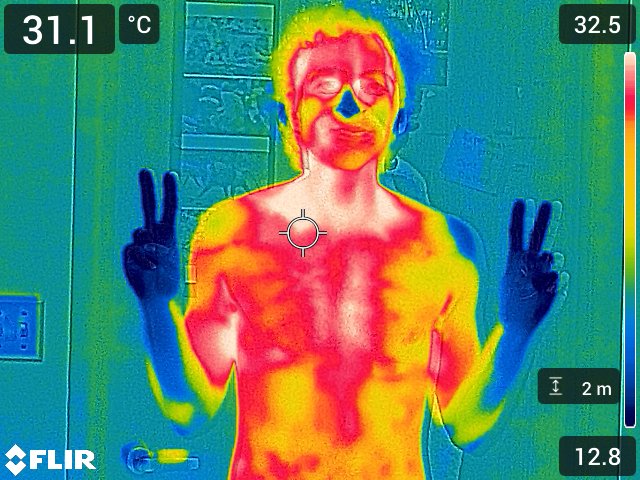
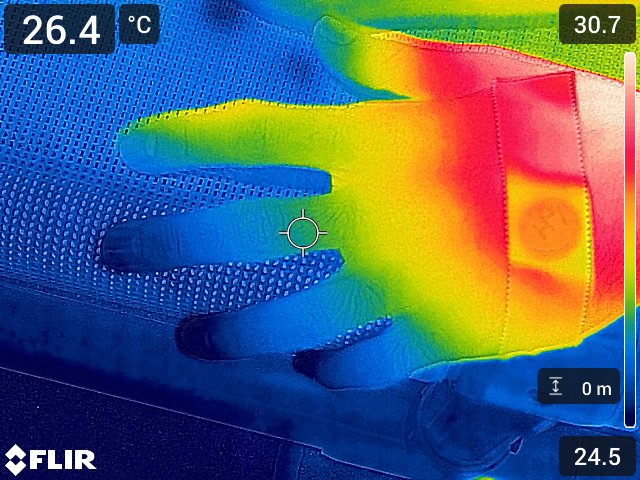
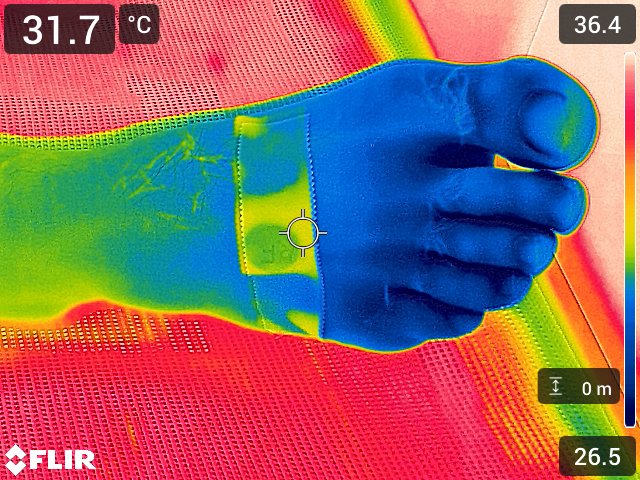
“You, believe it or not, were not the worst person we’ve ever seen,” the author was told after enduring Cowgill’s “climate chamber.”
Through experiments like Cowgill’s, researchers around the world are revising rules about when extremes veer from uncomfortable to deadly. Their findings change how we should think about the limits of hot and cold—and how to survive in a new world.
Embodied change
Archaeologists have known for some time that we once braved colder temperatures than anyone previously imagined. Humans pushed into Eurasia and North America well before the last glacial period ended about 11,700 years ago. We were the only hominins to make it out of this era. Neanderthals, Denisovans, and Homo floresiensis all went extinct. We don’t know for certain what killed those species. But we do know that humans survived thanks to protection from clothing, large social networks, and physiological flexibility. Human resilience to extreme temperature is baked into our bodies, behavior, and genetic code. We wouldn’t be here without it.
“Our bodies are constantly in communication with the environment,” says Cara Ocobock, an anthropologist at the University of Notre Dame who studies how we expend energy in extreme conditions. She has worked closely with Finnish reindeer herders and Wyoming mountaineers.
But the relationship between bodies and temperature is surprisingly still a mystery to scientists. In 1847, the anatomist Carl Bergmann observed that animal species grow larger in cold climates. The zoologist Joel Asaph Allen noted in 1877 that cold-dwellers had shorter appendages. Then there’s the nose thing: In the 1920s, the British anthropologist Arthur Thomson theorized that people in cold places have relatively long, narrow noses, the better to heat and humidify the air they take in. These theories stemmed from observations of animals like bears and foxes, and others that followed stemmed from studies comparing the bodies of cold-accustomed Indigenous populations with white male control groups. Some, like those having to do with optimization of surface area, do make sense: It seems reasonable that a tall, thin body increases the amount of skin available to dump excess heat. The problem is, scientists have never actually tested this stuff in humans.
“Our bodies are constantly in communication with the environment.”
Cara Ocobock, anthropologist, University of Notre Dame
Some of what we know about temperature tolerance thus far comes from century-old race science or assumptions that anatomy controls everything. But science has evolved. Biology has matured. Childhood experiences, lifestyles, fat cells, and wonky biochemical feedback loops can contribute to a picture of the body as more malleable than anything imagined before. And that’s prompting researchers to change how they study it.
“If you take someone who’s super long and lanky and lean and put them in a cold climate, are they gonna burn more calories to stay warm than somebody who’s short and broad?” Ocobock says. “No one’s looked at that.”
Ocobock and Cowgill teamed up with Scott Maddux and Elizabeth Cho at the Center for Anatomical Sciences at the University of North Texas Health Fort Worth. All four are biological anthropologists who have also puzzled over whether the rules Bergmann, Allen, and Thomson proposed are actually true.
For the past four years, the team has been studying how factors like metabolism, fat, sweat, blood flow, and personal history control thermoregulation.
Your native climate, for example, may influence how you handle temperature extremes. In a unique study of mortality statistics from 1980s Milan, Italians raised in warm southern Italy were more likely to survive heat waves in the northern part of the country.
Similar trends have appeared in cold climes. Researchers often measure cold tolerance by a person’s “brown adipose,” a type of fat that is specialized for generating heat (unlike white fat, which primarily stores energy). Brown fat is a cold adaptation because it delivers heat without the mechanism of shivering. Studies have linked it to living in cold climates, particularly at young ages. Wouter van Marken Lichtenbelt, the physiologist at Maastricht University who with colleagues discovered brown fat in adults, has shown that this tissue can further activate with cold exposure and even help regulate blood sugar and influence how the body burns other fat.
That adaptability served as an early clue for the Texas team. They want to know how a person’s response to hot and cold correlates with height, weight, and body shape. What is the difference, Maddux asks, between “a male who’s 6 foot 6 and weighs 240 pounds” and someone else in the same environment “who’s 4 foot 10 and weighs 89 pounds”? But the team also wondered if shape was only part of the story.
Their multi-year experiment uses tools that anthropologists couldn’t have imagined a century ago—devices that track metabolism in real time and analyze genetics. Each participant gets a CT scan (measuring body shape), a DEXA scan (estimating percentages of fat and muscle), high-resolution 3D scans, and DNA analysis from saliva to examine ancestry genetically.
Volunteers lie on a cot in underwear, as I did, for about 45 minutes in each climate condition, all on separate days. There’s dry cold, around 40 °F, akin to braving a walk-in refrigerator. Then dry heat and humid heat: 112 °F with 15% humidity and 98 °F with 85% humidity. They call it “going to Vegas” and “going to Houston,” says Cowgill. The chamber session is long enough to measure an effect, but short enough to be safe.
Before I traveled to Texas, Cowgill told me she suspected the old rules would fall. Studies linking temperature tolerance to race and ethnicity, for example, seemed tenuous because biological anthropologists today reject the concept of distinct races. It’s a false premise, she told me: “No one in biological anthropology would argue that human beings do not vary across the globe—that’s obvious to anyone with eyes. [But] you can’t draw sharp borders around populations.”
She added, “I think there’s a substantial possibility that we spend four years testing this and find out that really, limb length, body mass, surface area […] are not the primary things that are predicting how well you do in cold and heat.”
Adaptable to a degree
In July 1995, a week-long heat wave pushed Chicago above 100 °F, killing roughly 500 people. Thirty years later, Ollie Jay, a physiologist at the University of Sydney, can duplicate the conditions of that exceptionally humid heat wave in a climate chamber at his laboratory.
“We can simulate the Chicago heat wave of ’95. The Paris heat wave of 2003. The heat wave [in early July of this year] in Europe,” Jay says. “As long as we’ve got the temperature and humidity information, we can re-create those conditions.”
“Everybody has quite an intimate experience of feeling hot, so we’ve got 8 billion experts on how to keep cool,” he says. Yet our internal sense of when heat turns deadly is unreliable. Even professional athletes overseen by experienced medics have died after missing dangerous warning signs. And little research has been done to explore how vulnerable populations such as elderly people, those with heart disease, and low-income communities with limited access to cooling respond to extreme heat.
Jay’s team researches the most effective strategies for surviving it. He lambastes air-conditioning, saying it demands so much energy that it can aggravate climate change in “a vicious cycle.” Instead, he has monitored people’s vital signs while they use fans and skin mists to endure three hours in humid and dry heat. In results published last year, his research found that fans reduced cardiovascular strain by 86% for people with heart disease in the type of humid heat familiar in Chicago.
Dry heat was a different story. In that simulation, fans not only didn’t help but actually doubled the rate at which core temperatures rose in healthy older people.
Heat kills. But not without a fight. Your body must keep its internal temperature in a narrow window flanking 98 °F by less than two degrees. The simple fact that you’re alive means you are producing heat. Your body needs to export that heat without amassing much more. The nervous system relaxes narrow blood vessels along your skin. Your heart rate increases, propelling more warm blood to your extremities and away from your organs. You sweat. And when that sweat evaporates, it carries a torrent of body heat away with it.
This thermoregulatory response can be trained. Studies by van Marken Lichtenbelt have shown that exposure to mild heat increases sweat capacity, decreases blood pressure, and drops resting heart rate. Long-term studies based on Finnish saunas suggest similar correlations.
The body may adapt protectively to cold, too. In this case, body heat is your lifeline. Shivering and exercise help keep bodies warm. So can clothing. Cardiovascular deaths are thought to spike in cold weather. But people more adapted to cold seem better able to reroute their blood flow in ways that keep their organs warm without dropping their temperature too many degrees in their extremities.
Earlier this year, the biological anthropologist Stephanie B. Levy (no relation) reported that New Yorkers who experienced lower average temperatures had more productive brown fat, adding evidence for the idea that the inner workings of our bodies adjust to the climate throughout the year and perhaps even throughout our lives. “Do our bodies hold a biological memory of past seasons?” Levy wonders. “That’s still an open question. There’s some work in rodent models to suggest that that’s the case.”
Although people clearly acclimatize with enough strenuous exposures to either cold or heat, Jay says, “you reach a ceiling.” Consider sweat: Heat exposure can increase the amount you sweat only until your skin is completely saturated. It’s a nonnegotiable physical limit. Any additional sweat just means leaking water without carrying away any more heat. “I’ve heard people say we’ll just find a way of evolving out of this—we’ll biologically adapt,” Jay says. “Unless we’re completely changing our body shape, then that’s not going to happen.”
And body shape may not even sway thermoregulation as much as previously believed. The subject I observed, a personal trainer, appeared outwardly adapted for cold: his broad shoulders didn’t even fit in a single CT scan image. Cowgill supposed that this muscle mass insulated him. When he emerged from his session in the 40 °F environment, though, he had finally started shivering—intensely. The researchers covered him in a heated blanket. He continued shivering. Driving to lunch over an hour later in a hot car, he still mentioned feeling cold. An hour after that, a finger prick drew no blood, a sign that blood vessels in his extremities remained constricted. His body temperature fell about half a degree C in the cold session—a significant drop—and his wider build did not appear to shield him from the cold as well as my involuntary shivering protected me.
I asked Cowgill if perhaps there is no such thing as being uniquely predisposed to hot or cold. “Absolutely,” she said.
A hot mess
So if body shape doesn’t tell us much about how a person maintains body temperature, and acclimation also runs into limits, then how do we determine how hot is too hot?
In 2010 two climate change researchers, Steven Sherwood and Matthew Huber, argued that regions around the world become uninhabitable at wet-bulb temperatures of 35 °C, or 95 °F. (Wet-bulb measurements are a way to combine air temperature and relative humidity.) Above 35 °C, a person simply wouldn’t be able to dissipate heat quickly enough. But it turns out that their estimate was too optimistic.
Researchers “ran with” that number for a decade, says Daniel Vecellio, a bioclimatologist at the University of Nebraska, Omaha. “But the number had never been actually empirically tested.” In 2021 a Pennsylvania State University physiologist, W. Larry Kenney, worked with Vecellio and others to test wet-bulb limits in a climate chamber. Kenney’s lab investigates which combinations of temperature, humidity, and time push a person’s body over the edge.
Not long after, the researchers came up with their own wet-bulb limit of human tolerance: below 31 °C in warm, humid conditions for the youngest cohort, people in their thermoregulatory prime. Their research suggests that a day reaching 98 °F and 65% humidity, for example, poses danger in a matter of hours, even for healthy people.
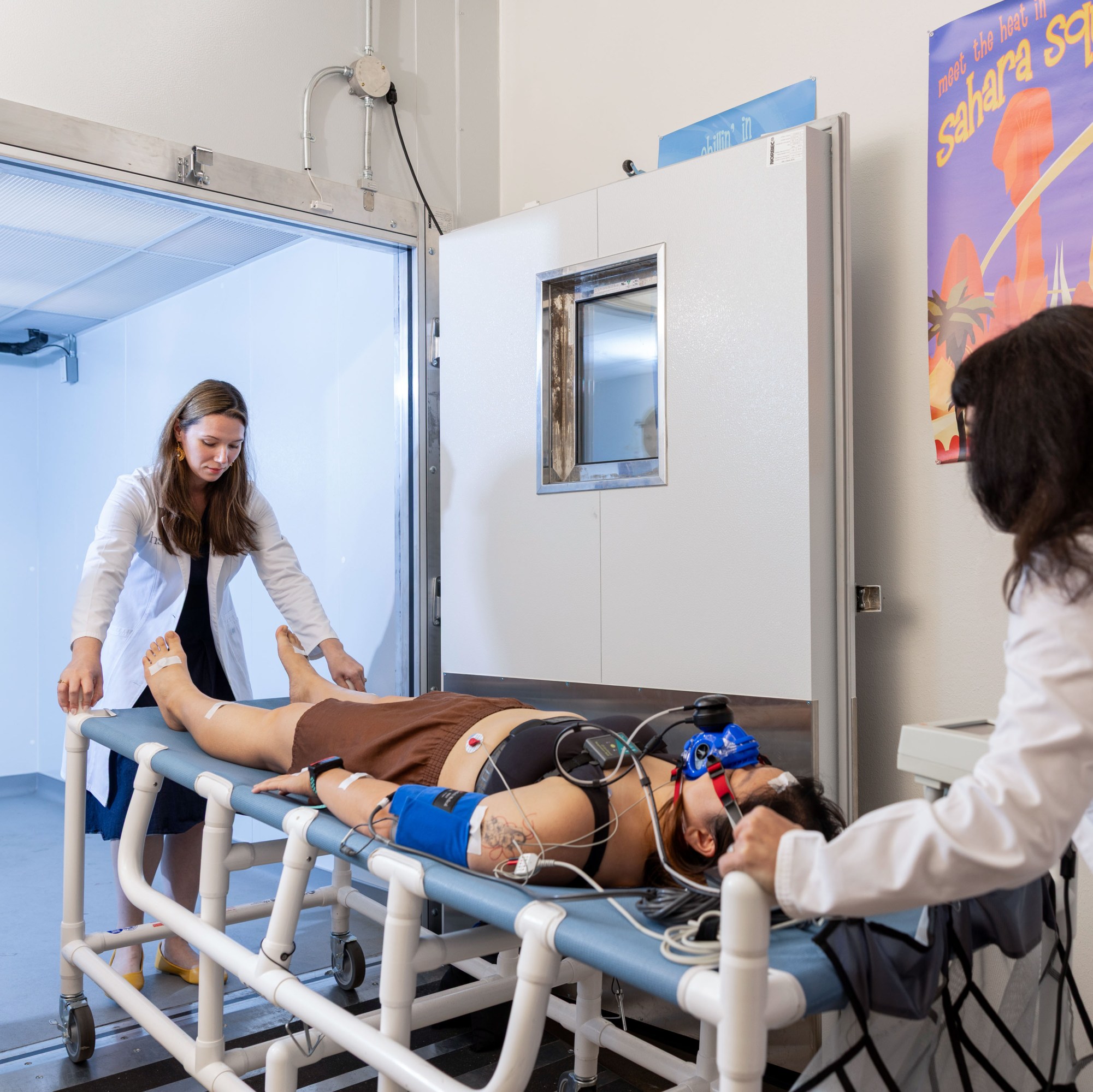
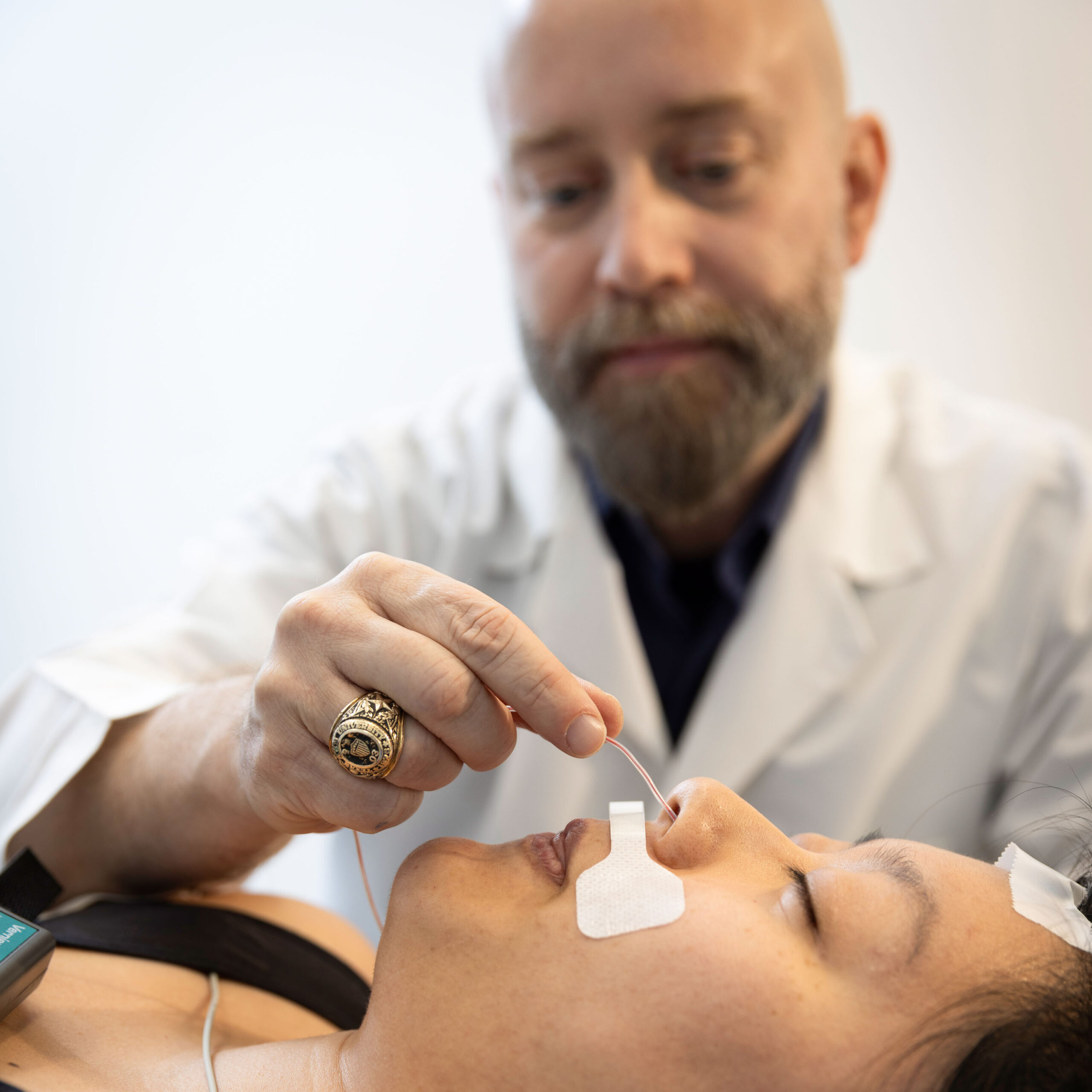

Cowgill and her colleagues Elizabeth Cho (top) and Scott Maddux prepare graduate student Joanna Bui for a “room-temperature test.”
In 2023, Vecellio and Huber teamed up, combining the growing arsenal of lab data with state-of-the-art climate simulations to predict where heat and humidity most threatened global populations: first the Middle East and South Asia, then sub-Saharan Africa and eastern China. And assuming that warming reaches 3 to 4 °C over preindustrial levels this century, as predicted, parts of North America, South America, and northern and central Australia will be next.
Last June, Vecellio, Huber, and Kenney co-published an article revising the limits that Huber had proposed in 2010. “Why not 35 °C?” explained why the human limits have turned out to be lower than expected. Those initial estimates overlooked the fact that our skin temperature can quickly jump above 101 °F in hot weather, for example, making it harder to dump internal heat.
The Penn State team has published deep dives on how heat tolerance changes with sex and age. Older participants’ wet-bulb limits wound up being even lower—between 27 and 28 °C in warm, humid conditions—and varied more from person to person than they did in young people. “The conditions that we experience now—especially here in North America and Europe, places like that—are well below the limits that we found in our research,” Vecellio says. “We know that heat kills now.”
What this fast-growing body of research suggests, Vecellio stresses, is that you can’t define heat risk by just one or two numbers. Last year, he and researchers at Arizona State University pulled up the hottest 10% of hours between 2005 and 2020 for each of 96 US cities. They wanted to compare recent heat-health research with historical weather data for a new perspective: How frequently is it so hot that people’s bodies can’t compensate for it? Over 88% of those “hot hours” met that criterion for people in full sun. In the shade, most of those heat waves became meaningfully less dangerous.
“There’s really almost no one who ‘needs’ to die in a heat wave,” says Ebi, the epidemiologist. “We have the tools. We have the understanding. Essentially all [those] deaths are preventable.”
More than a number
A year after visiting Texas, I called Cowgill to hear what she was thinking after four summers of chamber experiments. She told me that the only rule about hot and cold she currently stands behind is … well, none.
She recalled a recent participant—the smallest man in the study, weighing 114 pounds. “He shivered like a leaf on a tree,” Cowgill says. Normally, a strong shiverer warms up quickly. Core temperature may even climb a little. “This [guy] was just shivering and shivering and shivering and not getting any warmer,” she says. She doesn’t know why this happened. “Every time I think I get a picture of what’s going on in there, we’ll have one person come in and just kind of be a complete exception to the rule,” she says, adding that you can’t just gloss over how much human bodies vary inside and out.
The same messiness complicates physiology studies.
Jay looks to embrace bodily complexities by improving physiological simulations of heat and the human strain it causes. He’s piloted studies that input a person’s activity level and type of clothing to predict core temperature, dehydration, and cardiovascular strain based on the particular level of heat. One can then estimate the person’s risk on the basis of factors like age and health. He’s also working on physiological models to identify vulnerable groups, inform early-warning systems ahead of heat waves, and possibly advise cities on whether interventions like fans and mists can help protect residents. “Heat is an all-of-society issue,” Ebi says. Officials could better prepare the public for cold snaps this way too.
“Death is not the only thing we’re concerned about,” Jay adds. Extreme temperatures bring morbidity and sickness and strain hospital systems: “There’s all these community-level impacts that we’re just completely missing.”
Climate change forces us to reckon with the knotty science of how our bodies interact with the environment. Predicting the health effects is a big and messy matter.
The first wave of answers from Fort Worth will materialize next year. The researchers will analyze thermal images to crunch data on brown fat. They’ll resolve whether, as Cowgill suspects, your body shape may not sway temperature tolerance as much as previously assumed. “Human variation is the rule,” she says, “not the exception.”
Max G. Levy is an independent journalist who writes about chemistry, public health, and the environment.







